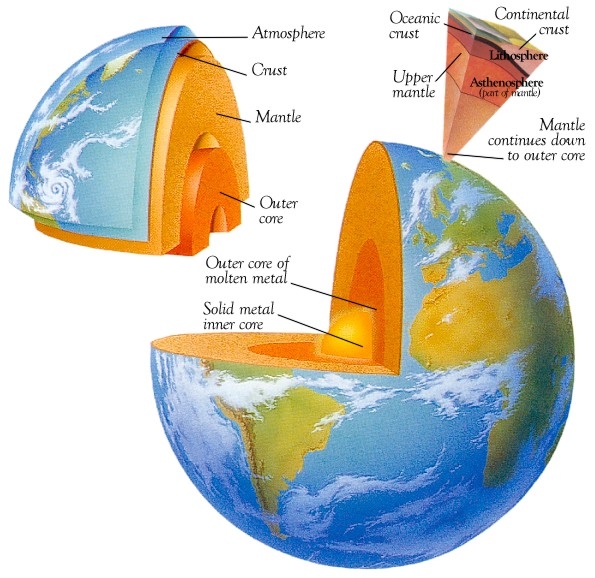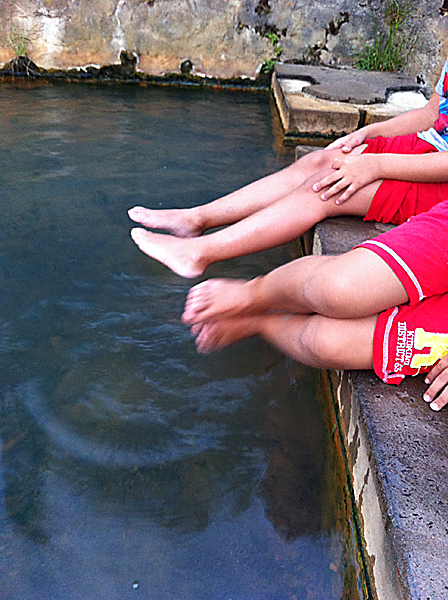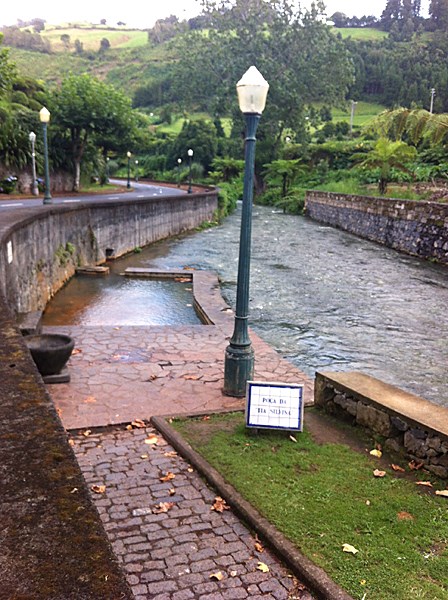Geothermal energy - The start
Geothermal energy is, generally, the heat contained within the Earth. Its origin is associated with heat dissipation originated early in the process of planet formation and disintegration of radioactive elements contained in rocks that continuously dissipates to the outside through three processes: conduction, convection and radiation.
This energy (which represents a power 10,000 times greater than the energy consumed worldwide each year, currently) can be used directly for space heating, water, fish farming, industrial processes and even to produce electricity.
Currently, geothermal energy also has a key role in the production of electricity with a viable alternative to fossil fuels. In Portugal, the use of geothermal energy stands out here, in the Azores.
The Earth's crust is only a thin layer of the surface on the Earth. The crust floats on a semi-liquid, thick flowing layer of rock called the mantle. As one descends into the Earth, the temperature rapidly increases at about 25–30°C/kilometre.

Ground water – the basics
Groundwater at the Azores occurs in two major aquifer systems: (1) the basal aquifer system, which corresponds to freshwater lenses floating on underlying saltwater, and (2) perched-water bodies. The basal aquifer system is in the coastal area, presenting generally a very low hydraulic gradient, and groundwater extraction is from drilled wells. The perched-water bodies correspond to pervious units, with impermeable to very low-permeability layers at the bottom and, where topographic conditions are favorable; they are drained by a large number of springs on the volcano slopes. Therefore, these aquifers at altitude correspond to confined layers or to leaky aquifers which can lose water through aquitards bounding them from above, with a flow-like water over a succession of roof tiles.
St Michaels island reality
|
São Miguel, the major island of the archipelago and belonging to the Azores eastern group, has an area of about 747 km2 and approximately 125800 inhabitants. Thermal waters in the Azores are first referenced in 1583 but the study of mineral and thermal water discharges in São Miguel started in 1873. The first reference to the therapeutic use of the thermal waters dates from 1614. Owing to the known therapeutic value of these waters several thermal hospitals were constructed, especially in the 19th century. However, the importance of these spas has decreased with time and at present several ‘‘banhos’’ are closed or in ruins.
Hydrothermal manifestations occur mainly in the three active volcanic centres, especially at the Fogo and Furnas volcanoes. |
 |
Secondary volcanic manifestations - Fumaroles
A fumarole (Latin fumus, smoke) is an opening in Earth’s crust, often in the neighbourhood of volcanoes,which emits steam and gases such as carbon dioxide, sulphur dioxide, hydrochloric acid, and hydrogen sulphide. Fumaroles are commonly called by the word solfataras, from the Italian solfo, sulfur. The general public tends to use fumarole interchangeably with solfatara, unrelated to chemistry. Less commonly, the term mofette is used. Technically speaking, solfatara describes a steam vent rich in sulphuric compounds, such as sulphur dioxide or hydrogen sulphide, while moffetes are rich in carbon dioxide.
|
Fumaroles are not quiet geothermal features. They have been described as hissing, roaring, and even thundering. The sounds are dependent on the force of the steambeing released into the atmosphere. Slowly diffusing emissions will have lessened sounds. Forceful, blasting emissions produce greater sounds. Fumaroles can occur on the surface of lava flows and thicker pyroclastic flows. The flows require a release of heat to cool off. Small cracks and crevices in the crust also allow steam from deeper within the Earth to escape. Fumaroles can be present singularly or in large fields full of them. Fumaroles are common globally wherever volcanism is occurring.
Depending on the heat source, fumaroles can be short or long term feature, ranging anywhere from weeks to many hundreds of years. The hotter the heat source is, whether it be an internal rock mass or a volcanic flow, the longer it will take to cool off, so the longer the fumarole will exist. A fumarole field is an area of thermal springs and gas vents where magma or hot igneous rocks at shallow depth are releasing gases or interacting with groundwater. From a simplistic point of view and the perspective of groundwater, fumaroles could be described as a hot spring that boils off all its water before the water reaches the surface.
|
 |
 About the Earthcache
About the Earthcache
Now, what is so special and unique about this specific fumarole that you can find at the GZ?
This fumarole is unique because it stands in a waterstream bed.
To claim this earthcache you need to fulfill the following tasks:
a) Tell me what do you think it's the temperature at the “fumarole pool”. And what is the temperature at the waterstream ? Now check both temperatures with a thermometer and explain your conclusions.
(You will have to get a cheap thermometer. There is no iPhone or android app for that yet!)
b) What are the dimensions of the “fumarole pool” ?
c) Do you notice a mineral smell? If yes, try to identify and describe it.
d) Observe the water in "fumarole pool", what can you observe?
Also, and despite being optional, please take a photo with your GPS near the “fumarole pool” with or without your feet in the water.
Send the responses via my geocaching profile and enjoy the “feet bath”.
FTF - Gummy(Az) Team
STF - MP-Azorean Crusader / elsa/carlos
TTF - ait3